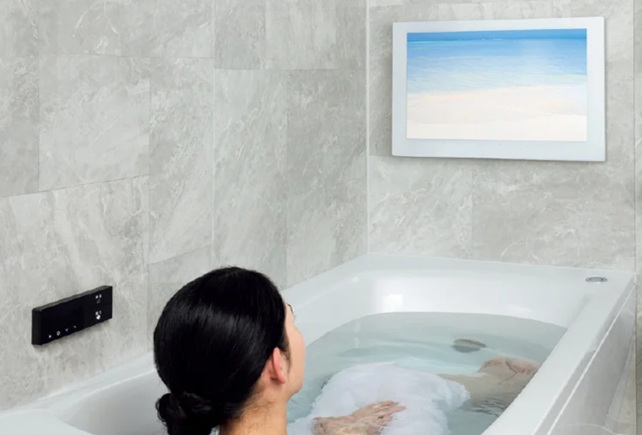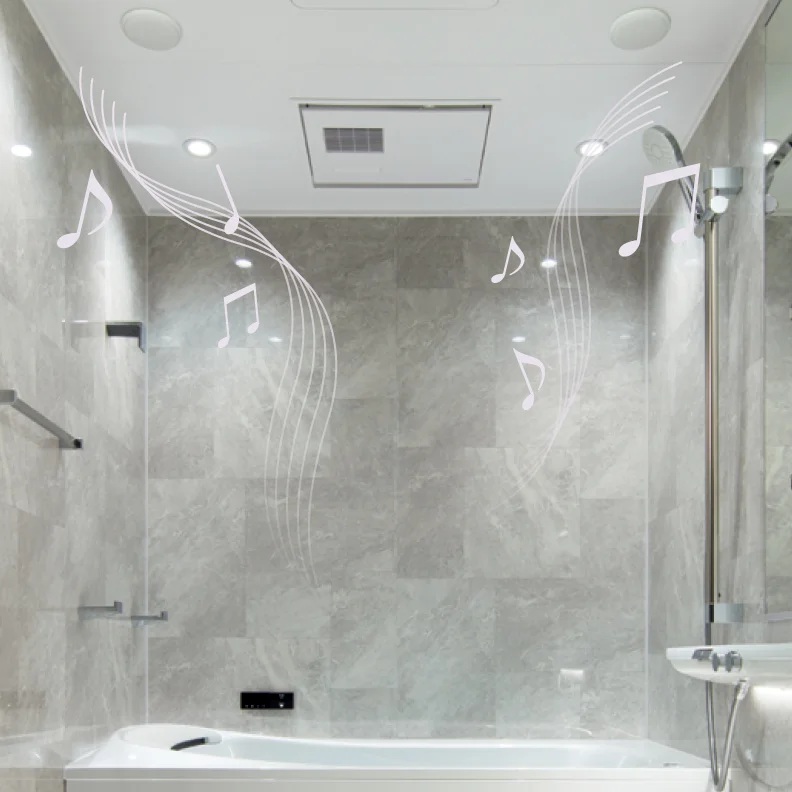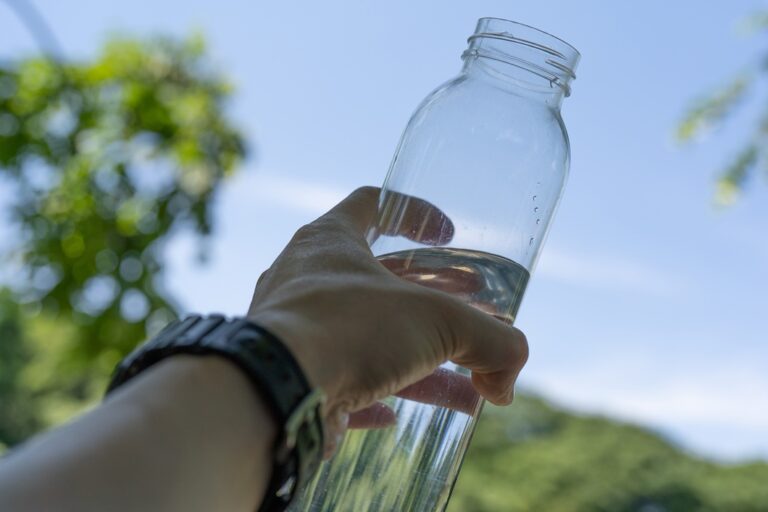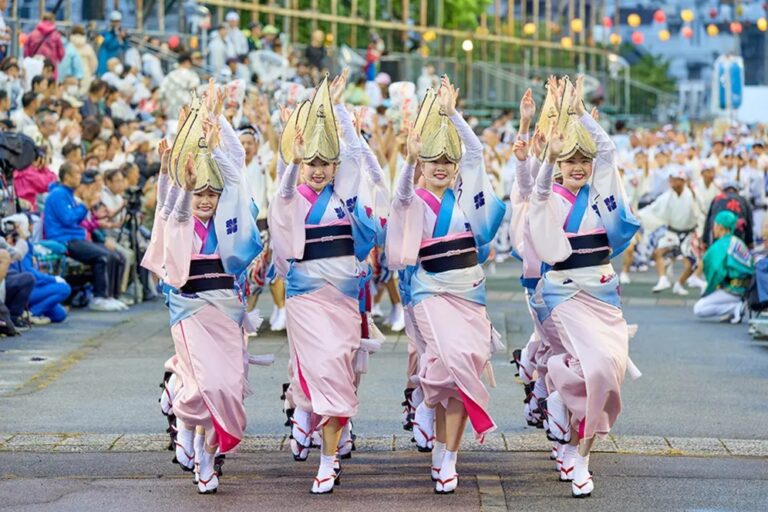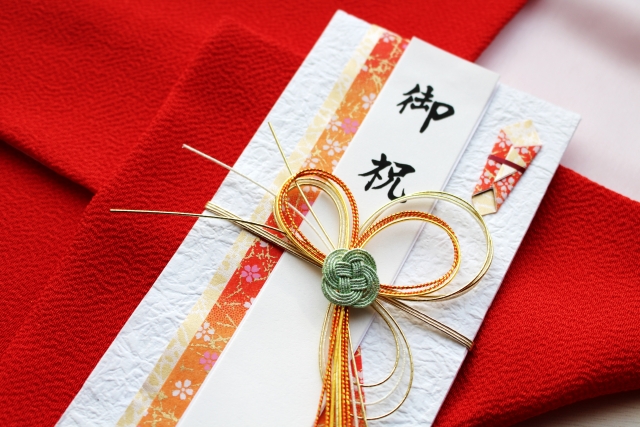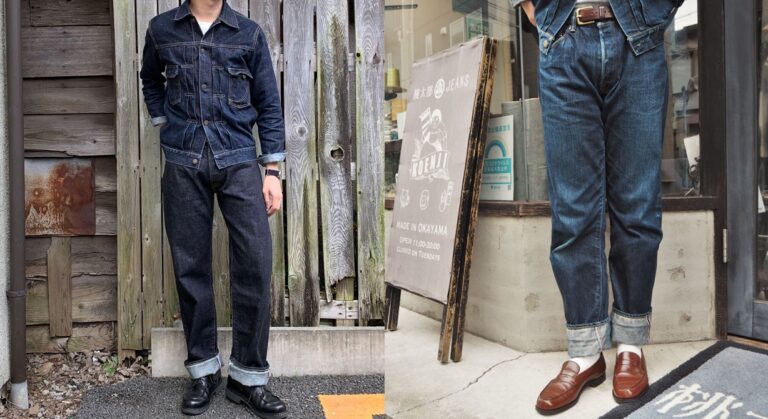Not Just Toilets! The Amazing World of Japanese Unit Bath
Bathing Is More Than Just Washing—A Deep Cultural Connection
Japanese people are famous for their love of baths. In the past, people would bring books into the tub; now it’s common to watch videos on a smartphone sealed in a ziplock bag. Baths are not just for cleaning—they are a place to relax and enjoy. Many people incorporate half-body baths, carbonated baths, music, and reading as part of their soothing daily rituals.
At the same time, an increasing number of younger people and busy professionals now opt for “just a quick shower on weekdays.” To meet these evolving needs, Japanese unit baths have integrated multiple features: bathtubs, showers, sinks, and drying systems all in one.
Why Did They Evolve So Much? The Relationship Between Japanese Housing and Unit Baths
In the past, bathrooms in Japan were typically custom-built with tiled walls and floors. Back then, it took a crew of workers about a month to construct a single bathroom. That all changed with the development of the unit bath—a pre-fabricated bathroom module made in a factory. These could be installed in just a few hours, dramatically improving construction efficiency.
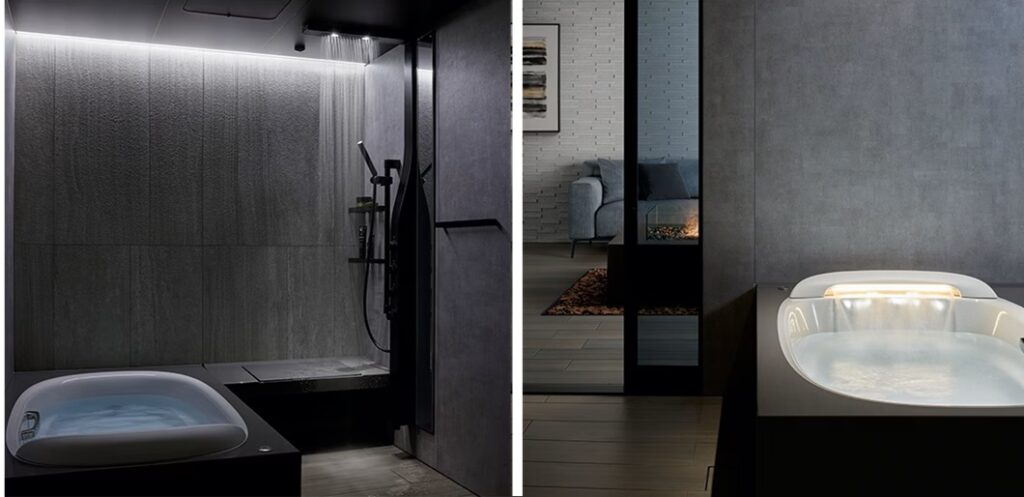
The unit bath was first developed in 1963 for the construction of Hotel New Otani ahead of the 1964 Tokyo Olympics. Featuring integrated walls, floors, and ceilings made from waterproof and insulated materials, these modules reduced water leakage risks and shortened the build time. Thanks to their safety and comfort—kids were less likely to get hurt if they fell—unit baths spread rapidly.
Japanese homes often lack a separate laundry room, and some apartment buildings prohibit balcony drying. In response, bathrooms have evolved to serve as drying spaces as well.
In contrast, the use of unit baths is limited in places like the United States due to labor union regulations. Each construction step—waterproofing, mortar laying, plumbing, cinder concrete, tiling, carpentry, etc.—is clearly divided among specialists, making it hard to adopt pre-fabricated modules.
Features That Shock Overseas Visitors: Top Unit Bath Innovations
🥇 1st Place: “The Bath Cleans Itself”
Many online reviews and social media posts express surprise: “I’ve never seen anything like this!” This refers to Japan’s automated cleaning systems.
For example, TOTO offers an automatic floor-cleaning system that sprays water and sanitizing mist. A single button press completes the task in 19–23 minutes. It’s popular among dual-income households and the elderly, helping prevent mold and slime buildup.
Explanation video by a renovation contractor
LIXIL, on the other hand, offers a “Clean Tub” feature that automatically rinses the bathtub with a shower spray after draining, keeping it fresh and grime-free.
A video from LIXIL showing how the cleaning process works with a transparent lid
These innovations truly embody the spirit of Japanese bath culture—where even the bath takes care of itself.
🥈 2nd Place: Watch Movies and Listen to Music in the Bath
With optional upgrades like high-quality speakers and 24-inch waterproof TVs, you can watch videos while soaking in the tub.
In Japan, multitasking during bath time is common—reading, music, aromatherapy, and especially half-body soaking are popular, especially among women. The market has responded with more relaxation-friendly bath options.
Some high-end models even include a “Shoulder Spa” feature, where warm water flows gently from the rim of the tub over your shoulders. It feels like a natural waterfall and promotes circulation. It’s perfect for those who dislike full-body immersion or want to warm up quickly.
The fusion of entertainment and thermal therapy is a uniquely Japanese take on self-care. The bath is not just a place to wash—it’s a personal sanctuary.
🥉 3rd Place: Full-Body Shower Experience
Tower-style shower units bring a spa-like experience to your home. They offer overhead rain showers, back-body jets, and foot-warming nozzles that deliver even water pressure across the entire body.
The refreshing feeling of a shower pouring down from above and the comfort of a mist shower that covers your entire body | LIXIL AQUA NEO
Many models include filtration systems to remove chlorine, reducing skin and hair irritation. With stylish designs—often imported—these units are perfect for those who value both function and aesthetics.
4th Place: “Warm and Soft” Bathroom Floors
TOTO’s “HotkaRari” floors eliminate the shock of stepping onto cold tile in winter. Built with a cushioned layer of insulation, the floor feels warm and is slip-resistant.
TOTO’s Hokkarari Floor commercial
This technology also helps prevent injuries from falls, making it ideal for seniors and children. It’s a uniquely Japanese breakthrough in comfort, safety, and thermal insulation.
5th Place: Bathtub Thermos—Stays Warm for Hours
This highly insulated bathtub keeps the water temperature at just a few degrees Celsius, even after several hours. Family members of different ages and lifestyles take baths at different times. When bathing at different times by several hours, this “bathtub that keeps the water temperature within a few degrees of its original level”—like a vacuum-insulated thermos (such as a Stanley bottle)—helps families enjoy warm baths without wasting water or energy.
After 4 hours, the temperature of the hot water will drop by about 2.5°C.
6th Place: “The Bath Will Be Ready Soon”—Talking Bathtubs
To accommodate Japanese people who don’t like warning buzzers, the bathtub status is announced in a gentle voice. There are variations such as “The water is being filled” and “The water is boiling.” You won’t be put off by the buzzer even when you’re having a conversation with a guest. Sometimes it can even be a chance to cut a conversation short if they’re staying too long.
7th Place: One-Touch Reheat and Temperature Control
You can set your preferred water temperature and easily fill or reheat the tub with the touch of a button. This function is especially convenient if you want to bathe again the next morning using the same water.
Thanks to Japan’s high-insulation bathtubs, the water stays warm for several hours. However, after a full night, the temperature usually drops too much for a comfortable soak. In such cases, reheating is necessary.
Since you’re reusing the same water, it helps save on water bills. Keep in mind, though, that reheating still consumes gas.
8th Place: Bathroom drying system – You can dry your clothes here.
It is only recently in Japan that homes with laundry rooms, which are common overseas, have begun to be built. For apartments in urban areas where drying on balconies is not permitted, or for people who want to avoid drying outside, there are bathroom drying systems that combine heating, drying, and ventilation. This function is designed for Japanese homes, where laundry rooms are often unavailable.
9th Place: Reuse Bathwater for Laundry—”Nokori-yu”
This function allows you to send bathwater directly to a washing machine with a built-in bathwater pump. If you connect the washing machine when installing the bathroom, you can use the remaining water for laundry with just the push of a button on the washing machine, without having to take out the pump or carry a bucket.
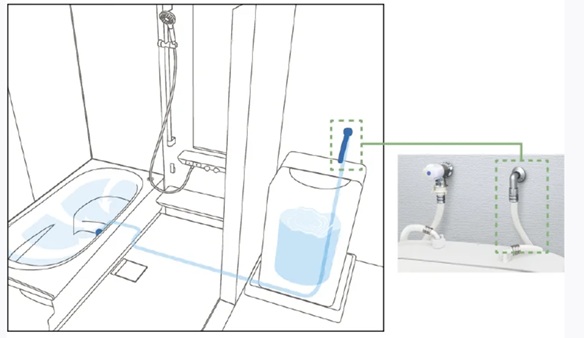
The bathtub and washing machine are directly connected by dedicated piping. Simply press a button on the washing machine to pump out the remaining water from the bathtub, making it easy to reuse.
Bathing Etiquette: Sharing the Water
In Japan, it is common for families to share bath water. For this reason, it is common to keep the bath water as clean as possible, such as by rinsing your body with water before bathing, or by washing your body in the shower area before getting in the bath. If you are still concerned, rinse your body with clean water from the shower before getting out of the bath.
How Much Does It Cost?
In Japan, many rental units come with advanced bath features as standard. For home renovations, expect to pay around 1.5 to 3 million yen, including installation, for a high-end model.
Even overseas, some people special-order Japanese-style baths. One example is Bartok Design, which crafts and exports premium tubs.
More Than Just Looks: Built for Daily Comfort
Just like some Japanese people dream of clawfoot tubs, it’s natural for cultures to admire different styles. But Japanese unit baths prioritize daily comfort.
It’s not about showing off. It’s about being practical, easy to use, and deeply relaxing. That’s the real story behind Japanese bathrooms.
You might also be interested in these articles
■Japan, the True Paradise for Solo Adventures

Editor and writer from Japan. Not the best at English, but I share real stories with heart and honesty — aiming to connect cultures and ideas that matter.


